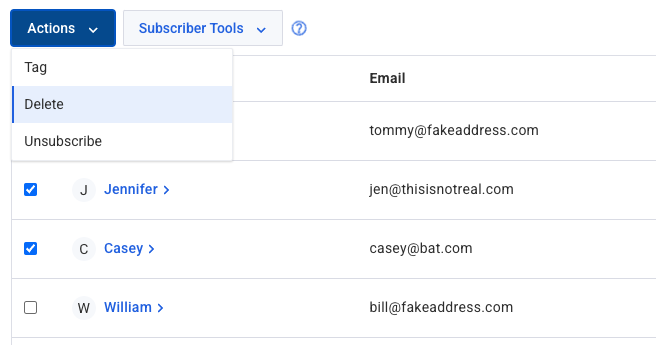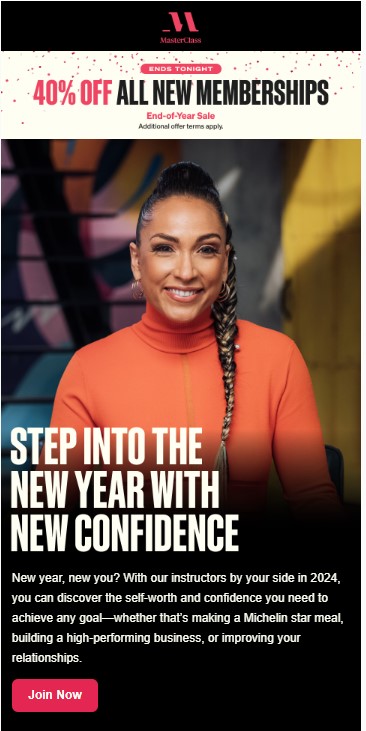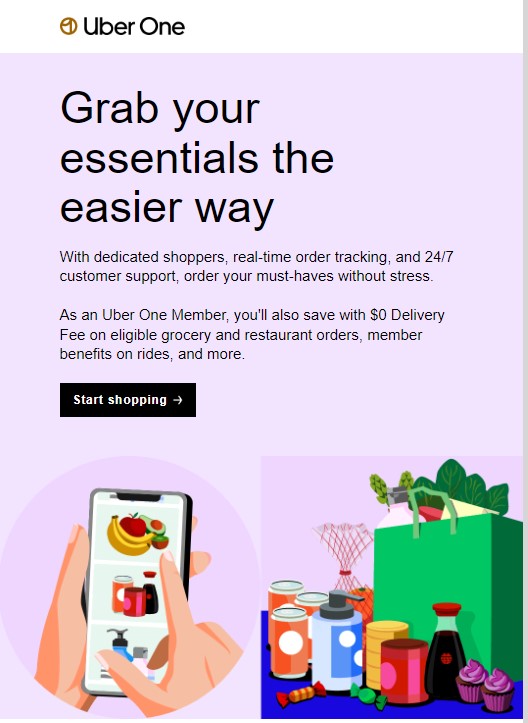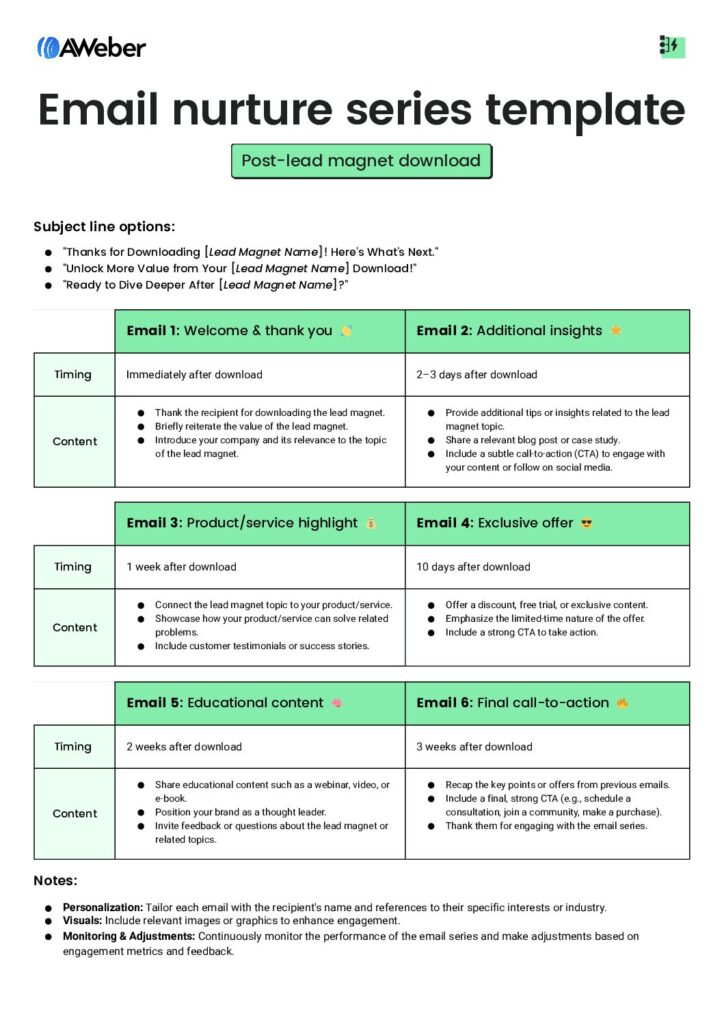Mastering email nurture campaigns: A guide to boosting customer engagement
By Rhonda Bradley January 9, 2024
Are you looking for a ridiculously effective way to generate engagement and boost sales without investing a lot of time or money? Email nurture campaigns are the answer!
We all know it’s important to keep our email subscribers engaged, send them personalized content, and nurture them through the sales funnel.
But if you’re running a small business, that all sounds like a whole lot of work.
That’s where email nurture campaigns step in.
Using simple automation tools, an email nurture campaign pays attention to how people interact with your brand. Then it sends a relevant series of emails to cultivate their interest and guide them toward making a purchase or commitment to your service.
The best part? You can put multiple nurture campaigns on autopilot and it probably won’t cost you a penny more than what you already pay for your email marketing service.
Big companies often spend weeks or months writing email campaigns, thanks to red tape and multiple-approval processes. But as a small business, you can write, adjust, and approve your own campaigns in under a couple of hours.
In this guide, you’ll discover how easy it is to create automated email campaigns that nurture leads through the sales funnel and increase your engagement and sales — with very little effort on your part.
- What is an email nurture marketing campaign?
- How do nurture emails work?
- 7 best practices for email nurture campaigns
- How to set up an email nurture campaign: A 5-step checklist
What is an email nurture marketing campaign?
An email nurture campaign is an automated series of emails sent in response to a specific user behavior. Its purpose is to engage readers and move them further along the sales funnel. Nurture campaigns are a highly effective way to guide email subscribers toward making a purchase or commitment.
For example, if someone downloads a free resource on your website or clicks on a link in your email, it can trigger a preset series of emails that encourages them to engage further, sign up for a free trial, or make a purchase.
Nurture campaigns are fully automated after the initial setup. It’s like hiring a team of talented salespeople who need very little training or supervision.
When an email subscriber clicks on a link in an email, reads a specific blog post, or abandons a shopping cart without making the purchase — these are all “behavioral triggers” that can automate the launch of an email nurture campaign.
Why create email nurture campaigns?
Email nurture campaigns are an effective way to engage with people who interact with your brand so you can guide them toward making a purchase. They help to move people along the sales funnel, encourage conversions, and deepen relationships with your subscribers.
How do nurture emails work?
Email nurture campaigns work by providing valuable, relevant email content based on a user’s interests, behavior, or stage in the marketing funnel.
When subscribers interact with your emails or website, their behavior gives you clues about where they’re at in the marketing funnel and what type of products or content they like. You can use these clues as behavioral triggers that activate an automated series of relevant emails.
Here are some ways subscribers might interact with your brand:
- Download a free resource or lead magnet from your website.
- Click on a blog link in a newsletter.
- Follow links to a free consultation without scheduling one.
- Add products to their shopping cart without making the purchase.
- Finish one of your courses.
A good email marketing software can track these kinds of interactions and use them as triggers to activate automated email nurture campaigns.
How long should a nurture campaign be?
Email nurture campaigns usually consist of a series of 3 – 10 emails sent at a frequency of 1-3 emails per week.
What is the purpose of an email nurture campaign?
Some email nurture campaigns aim to keep readers engaged, or re-engaged, with your brand.
Others focus on closing sales or encouraging people to sign up for a free trial.
Both are effective as long as you choose only one goal per nurture series.
7 best practices for email nurture campaigns
These email nurture campaign best practices will help you create successful, high-converting campaigns. You might want to bookmark this webpage so you have a checklist to help you create effective email nurture campaigns in the future.
#1 – Develop a high-quality email list
Developing a high-quality email list helps boost your sender reputation, deliverability, and open rates. It also gives you a more accurate picture of how well your nurture campaigns are working.
Follow these tips to build and maintain a high-quality email list:
- Aim for a list of highly engaged subscribers rather than simply trying to boost the number of people on your list
- Understand the CAN-SPAM Act and carefully abide by its policies
- Regularly clean your subscriber list by removing inactive subscribers
How’s your email list? Removing inactive subscribers is a fairly simple project. Most email marketing platforms let you bulk search for subscribers who haven’t been active in a while. This makes it easy to bulk select and bulk delete them from your mailing list.

Try this: Add “list maintenance” to your quarterly schedule and watch your deliverability and open rates increase as the year progresses!
#2 – Set one goal per campaign
Each email nurture campaign should have one clear mission.
Yours might be to encourage free consultations, make a purchase, or get started with a free trial.
For example, Skillshare uses personalized nurture campaigns to encourage readers to re-enroll in its annual program.

Setting one clear goal for each nurture campaign ensures that you focus all efforts on guiding readers toward one specific, relevant outcome.
#3 – Send valuable, irresistible content
Want to get your subscribers excited about opening your emails? Send them only the best!
Consider sending exclusive content that they won’t find anywhere else. Such as the most valuable tips or the biggest discounts.
Or send them more of what you already know they love.
For example, anytime I check out the latest pieces on Art.com, I get follow-up emails about similar products. Since they pay attention to my browsing habits and send highly relevant recommendations, I appreciate their emails and often engage with them.

Consider this: When was the last time you read an email that inspired you to “star” the sender because you didn’t want to miss out on the next one? How might you create similar FOMO (fear of missing out) email content for your subscribers?
#4 – Keep emails brief
The average professional receives about 120 email messages per day. That leaves them very little time to skim their emails and make a decision on what’s worth reading.
To boost your open rates and reduce unsubscribes, prove your value within the first 5 seconds of each email and keep the total word count to 100 words or less.
For example, the MasterClass email below uses very few words to convey a special discount, product benefits, product highlights, and a call-to-action.

The best nurture campaigns consist of short emails that deliver big value to the reader while consistently guiding them towards your campaign goal.
Struggling to write short emails? Try this: drop your lengthy email messages into Chat GPT and ask it to condense or summarize the message for you.
#5 – Unlock the power of copywriting psychology
Boost your open rates and conversions by leveraging proven copywriting techniques when writing nurture email subject headers and CTAs.
- Write compelling headlines that don’t mislead the reader.
- Personalize emails (and sometimes the subject line) with the person’s name.
- Make use of brief stories, quotes, and lists to keep the body content engaging.
- Write in a clear and simple style, at a 6th-7th grade reading level.
- Consider incorporating a sense of urgency in your CTA’s.
- When describing your product or service, make sure to include its benefits.
For example, the Uber One email below leads with a benefit (“Grab your essentials the easier way”), followed by product highlights (“dedicated real-time shoppers, real-time order tracking, and 24/7 support”) and another benefit (“order your must-haves without stress”).

Do you sometimes forget to highlight the benefits of your product or service?
Try the “sell me a pencil” copywriting exercise: Grab the nearest object (or pencil) and make a list of 3 things it does to make your life better.
I’ve got a cup of coffee next to me as I write this. It perks me up, makes me happy, and connects me to all my coffee-loving friends across the universe.
Now apply this exercise to your product. Make a list of the personal benefits it delivers to your customers, and use those benefits in your email copywriting!
#6 – Conduct A/B testing on your email nurture campaigns
Want to earn $48 for every $1 you spend on email marketing? Companies that conduct A/B testing get a significantly higher-than-average return on their email marketing investment.
You can use A/B testing (usually included with your email marketing service), to try out variations of your nurture emails. Try experimenting with elements such as subject lines, content, layouts, and CTAs to discover which variations are getting your emails opened and are most effective at engaging readers.
Check it out!
A/B testing sounds like something “techy” but it’s actually pretty simple. In the brief video below, Brandon from AWeber shows you how easy it is to conduct A/B testing.
#7 – Test and Optimize the Results of email nurture campaigns
Using data to refine your email campaigns is one of the most effective ways to accelerate your email marketing results.
Check out your email analytics regularly, paying special attention to open and click-through rates. This helps you discover what type of emails, subject lines, and CTAs get the best results over time. You can use that information to continually update and optimize your campaigns for increasing success.
By implementing the best practices above, your email nurture campaigns can become a powerful tool for driving engagement and conversions.
When was the last time you analyzed the results of your email marketing? It’s easy to do and you can complete a basic check in under a minute per day. Try it now!
How to set up an email nurture campaign: a 5-step checklist
Setting up an email nurture series can be quick and easy. The 5-step checklist below will help you create organized, effective nurture campaigns every time.
Step one: Define one goal for your email nurture campaign
Each campaign should focus on one singular goal, to ensure that your efforts are channeled effectively. Most nurture campaigns focus on either selling a product/service or keeping customers engaged with their brand.
What is your one goal for this email nurture series?
- Sell a product or service
- Upsell or cross-sell products and services
- Get readers to sign up for a free trial, demo, or consultation
- Re-engage inactive customers
- Keep people engaged with your brand
- Drive traffic to your website or landing pages
- Nurture leads by guiding them to the next step in the sales funnel
- Educate prospects about your products or services
- Promote an event, sale, or lead magnet
Choose a singular mission for your nurture campaign, then move on to developing the series in the next step.
Step two: Develop your email nurture campaign
Developing a nurture campaign requires making several decisions about how to personalize the series.
- What behavioral trigger will you choose to launch the campaign?
- How many emails will you include in the series and how often will you send them?
- What valuable content and special offer will you include in each email?
- How will you make readers look forward to the next email?
- What call-to-action (CTA) message will you use for the campaign (they can vary but should point toward the same goal)
- How will your emails achieve the one goal you set for this series?
Put it all together: Combine your notes from steps one and two to instantly create your nurture campaign strategy.
Step three: Write and design your email nurture campaign
Writing email campaigns is much easier with the help of templates and AI-driven writing tools.
Nurture campaign templates
Templates can help you quickly write effective emails, and many email marketing platforms provide them free to customers. For example, AWeber provides a selection of email templates and automated campaign template codes for users.

Writing a nurture series for a lead magnet? Download this free template to help you quickly write the entire email series:

AI assistance for nurture campaigns
If you’re new to nurture campaigns, consider using AI tools and programs to help you quickly develop effective campaigns. AI can provide you with outstanding input when developing email campaigns.
For example, you can share your campaign strategy and content ideas with Chat GPT or Google’s Bard, then ask for its input:
- Ask AI to provide more ideas or tips for higher engagement rates.
- Ask AI to create a template for your email series.
- Drop in your completed emails and ask whether the progression or writing could be improved.
Keep in mind that a lot of AI suggestions may not be relevant or appropriate for your brand or product. Stay true to your tone of voice and target audience, and only consider AI suggestions that are a good fit for both.
Step four: Set up your nurture campaign
When you’re ready to create your email nurture campaign, head over to your email marketing platform and follow their instructions for automated campaigns.
This is often a simple process that gets easier and quicker with each campaign you create. For example, we show you how to create an email nurture campaign for new subscribers.
Step five: Monitor and adjust your campaign results over time
Once your campaign is up and running, you can continually improve its results by monitoring key metrics such as open rates, click-through rates, conversion rates, and unsubscribe rates.
You can use this data to make adjustments to your campaign for better performance.
Remember, the effectiveness of a nurture campaign largely depends on how relevant and valuable its content is to your readers. If you continuously refine and adjust your strategy based on subscriber feedback and behavior, your campaigns will improve over time.
Launching an email nurture campaign the easy way
Email nurture campaigns are one of the most successful ways to boost sales, engagement, and conversions for your brand. The best nurture campaigns consist of short emails that deliver big value to the reader while guiding them towards a singular campaign goal.
Developing nurture campaigns is quicker and easier with technology that does the heavy lifting for you.
At AWeber, we provide everything you need to create automated nurture campaigns. Our super-friendly user interface helps you create stunning, engaging emails inside a drag-and-drop editor.

You can set up your first email nurture campaign right now by signing up for the free version of AWeber (no credit card required).
 87% off ends soon!
87% off ends soon! 
